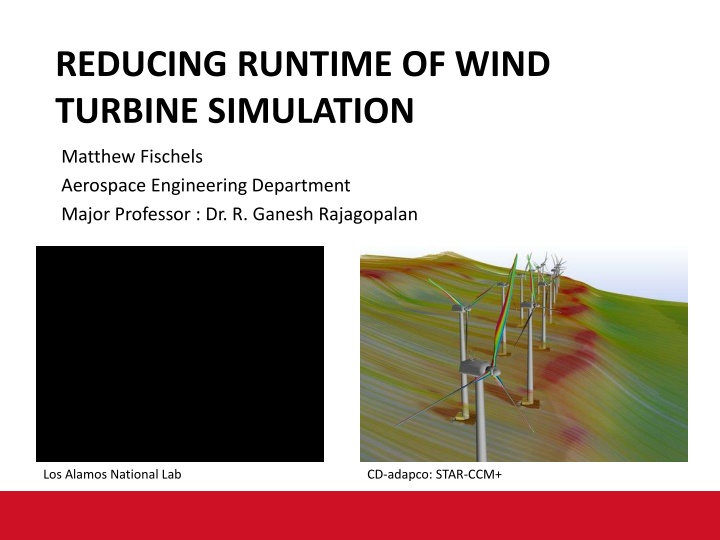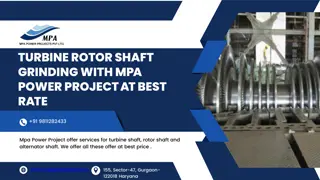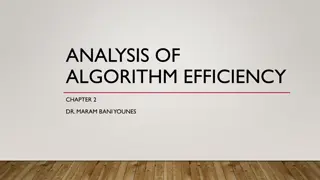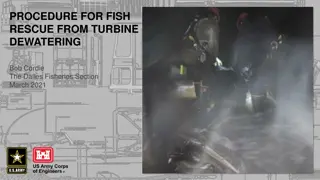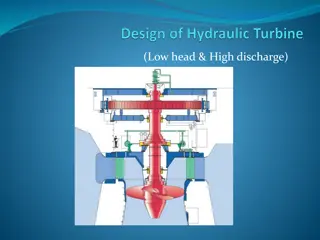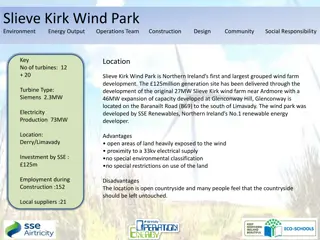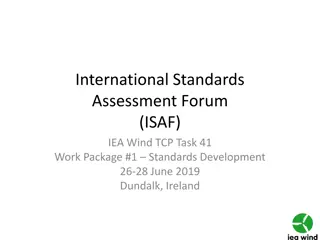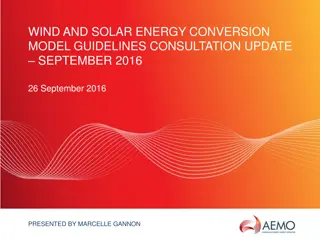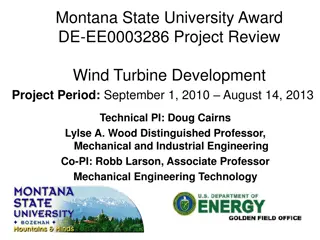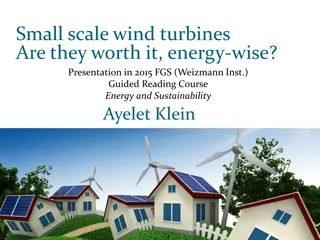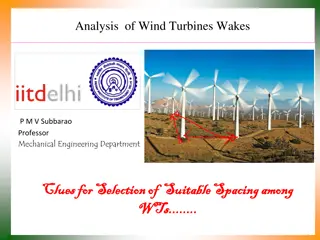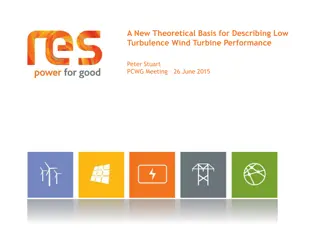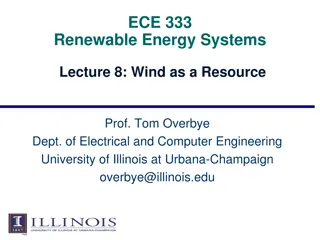Enhancing Wind Turbine Simulation Efficiency Through Algorithm Development
Matthew Fischels from the Aerospace Engineering Department aims to reduce the runtime of wind turbine simulations by developing more efficient computational fluid dynamics algorithms. By focusing on algorithm development such as Runge-Kutta methods and multigrid methods, the goal is to achieve faster simulation times while utilizing limited computing resources effectively.
Download Presentation

Please find below an Image/Link to download the presentation.
The content on the website is provided AS IS for your information and personal use only. It may not be sold, licensed, or shared on other websites without obtaining consent from the author.If you encounter any issues during the download, it is possible that the publisher has removed the file from their server.
You are allowed to download the files provided on this website for personal or commercial use, subject to the condition that they are used lawfully. All files are the property of their respective owners.
The content on the website is provided AS IS for your information and personal use only. It may not be sold, licensed, or shared on other websites without obtaining consent from the author.
E N D
Presentation Transcript
REDUCING RUNTIME OF WIND TURBINE SIMULATION Matthew Fischels Aerospace Engineering Department Major Professor : Dr. R. Ganesh Rajagopalan Los Alamos National Lab CD-adapco: STAR-CCM+
CFD Intro CFD = Computational Fluid Dynamics Navier-Stokes Equations = Conservation of mass, momentum, & energy Wind Turbines Assume incompressible (slow) Blade Modeling: geometry or as momentum source Turbulence Directly simulate (DNS) Model (LES,RANS) Ignore (Laminar)
Motivation Current wind turbine CFD simulations require large time and computing resources
Goal Simulate a wind farm on limited computing resources in a reasonable time limited: a single machine or a small server? reasonable: a day or a week? How many wind turbines?
How to reduce runtime? Hardware Utilization Parallelization/GPU Algorithm Development Develop more efficient methods for solving N-S My goal is to reduce runtime while on limited computing resources -> Algorithm Development
Algorithm Development Runge-Kutta Methods Multigrid Methods Interface Flux Computations
Runge-Kutta Methods Runge-Kutta methods efficiently/accurately integrate momentum equations in time RK-SIMPLER Algorithm Explicit (computationally inexpensive) Implicit (stable for larger time steps) For 2D flow over flat plate results Method Speedup Compared to SIMPLER (C-N) Explicit 5.4 Implicit 14.0
Runge-Kutta Methods 3D Isolated NREL Combined Experiment Rotor Downwind turbine No tower/nacelle Uniform inflow SIMPLER & RK-SIMPLER results identical
Runge-Kutta Methods Max. Time Step Wind Speed ERK IRK 5 m/s 0.070 s 0.100 s 10 m/s 0.040 s 0.060 s 15 m/s 0.025 s 0.040 s 20 m/s 0.020 s 0.030 s 25 m/s 0.016 s 0.024 s Runtime (hours) for each wind speed and method 5 m/s 10 m/s 15 m/s 20 m/s 25 m/s Speedup compared to SIMPLER ERK 18.0 10.4 6.2 5.1 4.0 IRK 24.4 16.0 9.4 7.4 5.9
Multigrid Methods Iterate on multiple grid levels Removes errors of wave length ~ grid spacing Restrict to coarser grids, prolong errors to finer grids
Multigrid Methods Error (or residual) drops at a faster rate with multigrid Multigrid speedup can be 14x or higher
Interface Flux Computations How to find a value between points? Linear Interpolation Upwind (1st Order, 2nd Order) Power Law QUICK Flux Corrected Method
Interface Flux Computations Power Law QUICK
Interface Flux Computations Two ways to look at these improvements 1. Can get greater accuracy on the same grid 2. Can get the same accuracy on a coarser grid Develop more accurate methods to further reduce grid requirements
How will these methods interact? Additive or Multiplicative? Example: Multigrid has speedup of 14 RK has a speedup of 10 Will the combination yield 24x speedup or 140x speedup? Probably somewhere in between Some combinations could be negative
